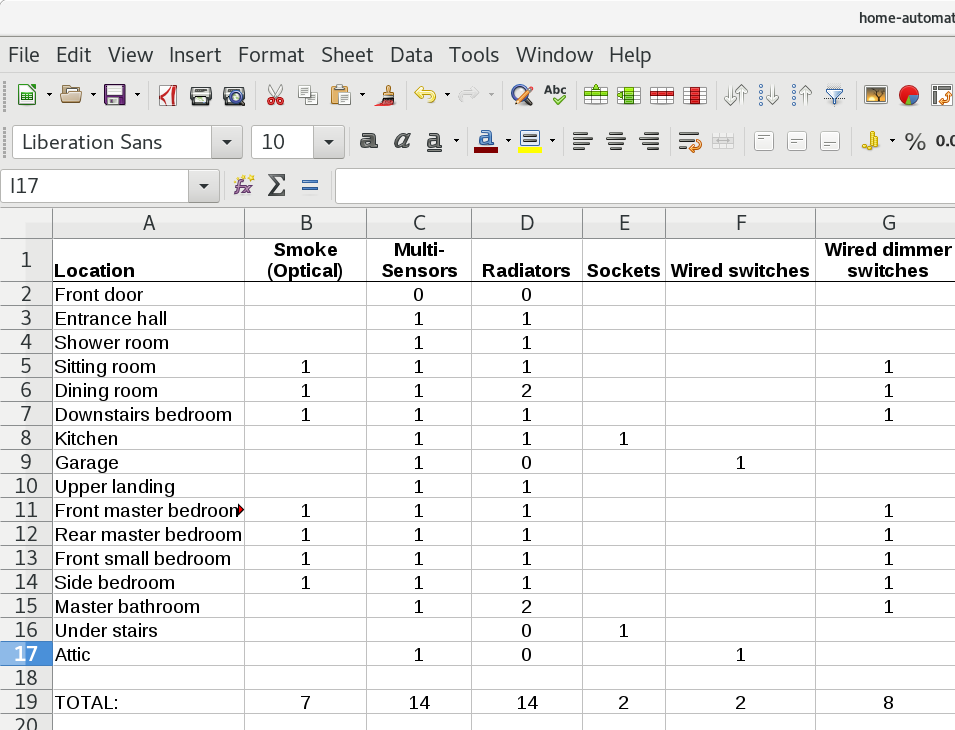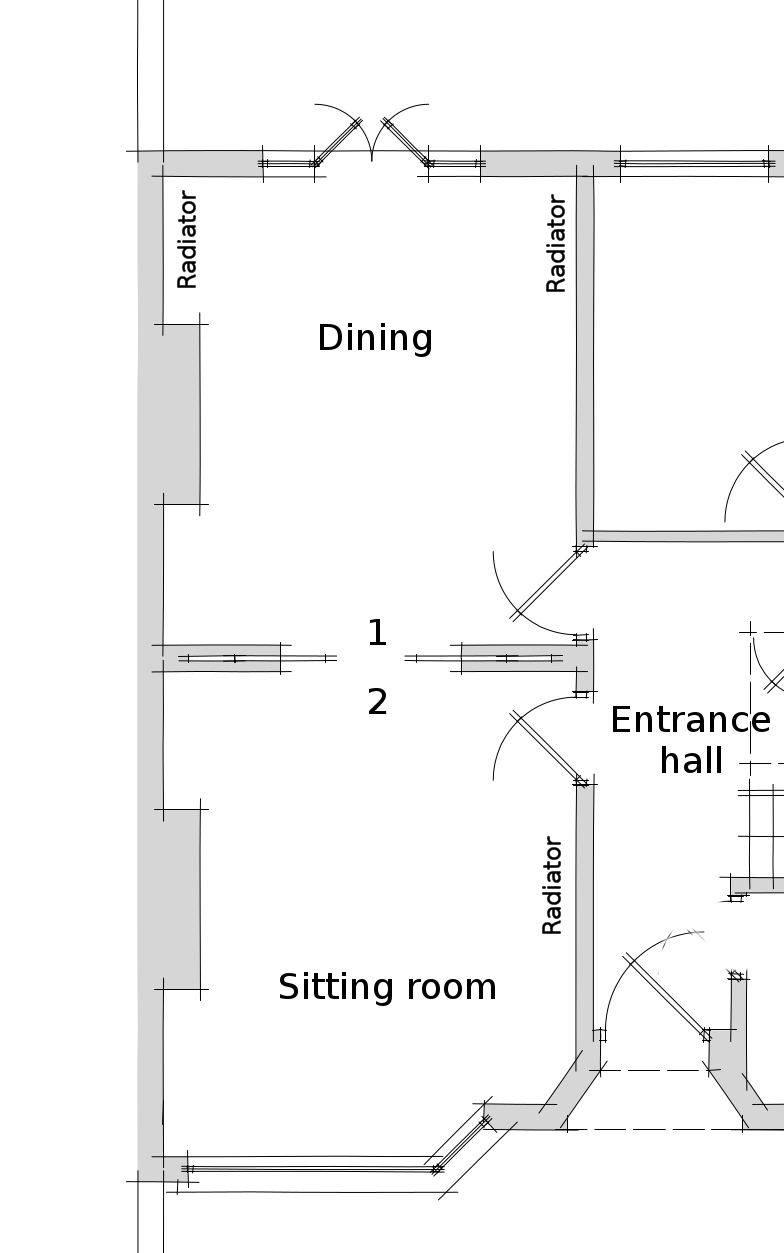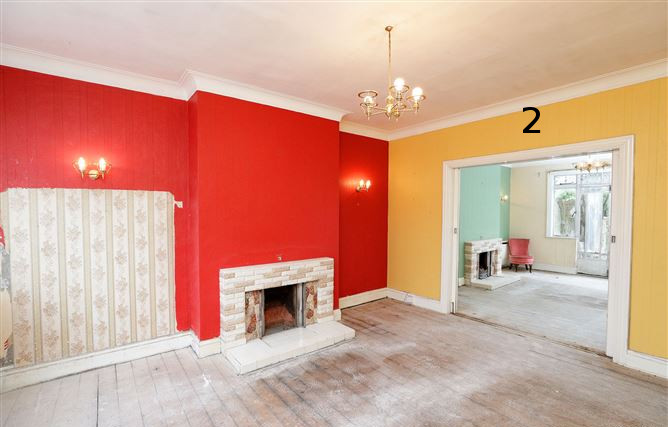Smart home: where to start?
My home automation plans have been progressing and I'd like to share some observations I've made about planning a project like this, especially for those with larger houses.
With so many products and technologies, it can be hard to know where to start. Some things have become straightforward, for example, Domoticz can soon be installed from a package on some distributions. Yet this simply leaves people contemplating what to do next.
The quickstart
For a small home, like an apartment, you can simply buy something like the Zigate, a single motion and temperature sensor, a couple of smart bulbs and expand from there.
For a large home, you can also get your feet wet with exactly the same approach in a single room. Once you are familiar with the products, use a more structured approach to plan a complete solution for every other space.
The Debian wiki has started gathering some notes on things that work easily on GNU/Linux systems like Debian as well as Fedora and others.

Prioritize
What is your first goal? For example, are you excited about having smart lights or are you more concerned with improving your heating system efficiency with zoned logic?
Trying to do everything at once may be overwhelming. Make each of these things into a separate sub-project or milestone.
Technology choices
There are many technology choices:
- Zigbee, Z-Wave or another protocol? I'm starting out with a preference for Zigbee but may try some Z-Wave devices along the way.
- E27 or B22 (Bayonet) light bulbs? People in the UK and former colonies may have B22 light sockets and lamps. For new deployments, you may want to standardize on E27. Amongst other things, E27 is used by all the Ikea lamp stands and if you want to be able to move your expensive new smart bulbs between different holders in your house at will, you may want to standardize on E27 for all of them and avoid buying any Bayonet / B22 products in future.
- Wired or wireless? Whenever you take up floorboards, it is a good idea to add some new wiring. For example, CAT6 can carry both power and data for a diverse range of devices.
- Battery or mains power? In an apartment with two rooms and less than five devices, batteries may be fine but in a house, you may end up with more than a hundred sensors, radiator valves, buttons, and switches and you may find yourself changing a battery in one of them every week. If you have lodgers or tenants and you are not there to change the batteries then this may cause further complications. Some of the sensors have a socket for an optional power supply, battery eliminators may also be an option.
Making an inventory
Creating a spreadsheet table is extremely useful.
This helps estimate the correct quantity of sensors, bulbs, radiator valves and switches and it also helps to budget. Simply print it out, leave it under the Christmas tree and hope Santa will do the rest for you.
Looking at my own house, these are the things I counted in a first pass:

Don't forget to include all those unusual spaces like walk-in pantries, a large cupboard under the stairs, cellar, en-suite or enclosed porch. Each deserves a row in the table.
Sensors help make good decisions
Whatever the aim of the project, sensors are likely to help obtain useful data about the space and this can help to choose and use other products more effectively.
Therefore, it is often a good idea to choose and deploy sensors through the home before choosing other products like radiator valves and smart bulbs.
The smartest place to put those smart sensors
When placing motion sensors, it is important to avoid putting them too close to doorways where they might detect motion in adjacent rooms or hallways. It is also a good idea to avoid putting the sensor too close to any light bulb: if the bulb attracts an insect, it will trigger the motion sensor repeatedly. Temperature sensors shouldn't be too close to heaters or potential draughts around doorways and windows.
There are a range of all-in-one sensors available, some have up to six features in one device smaller than an apple. In some rooms this is a convenient solution but in other rooms, it may be desirable to have separate motion and temperature sensors in different locations.
Consider the dining and sitting rooms in my own house, illustrated in the floorplan below. The sitting room is also a potential 6th bedroom or guest room with sofa bed, the downstairs shower room conveniently located across the hall. The dining room is joined to the sitting room by a sliding double door. When the sliding door is open, a 360 degree motion sensor in the ceiling of the sitting room may detect motion in the dining room and vice-versa. It appears that 180 degree motion sensors located at the points "1" and "2" in the floorplan may be a better solution.
These rooms have wall mounted radiators and fireplaces. To avoid any of these potential heat sources the temperature sensors should probably be in the middle of the room.

This photo shows the proposed location for the 180 degree motion sensor "2" on the wall above the double door:

Summary
To summarize, buy a Zigate and a small number of products to start experimenting with. Make an inventory of all the products potentially needed for your home. Try to mark sensor locations on a floorplan, thinking about the type of sensor (or multiple sensors) you need for each space.